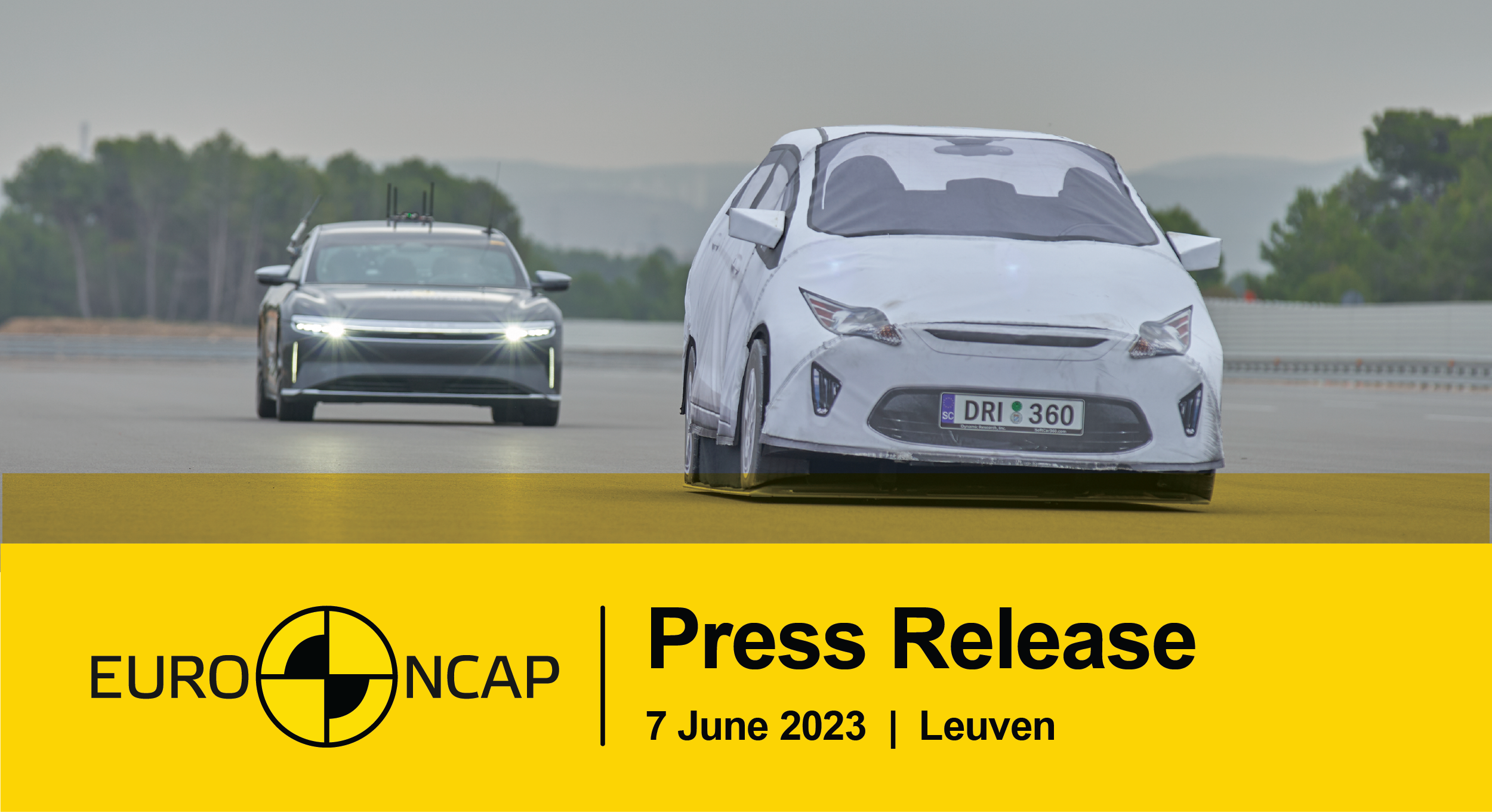Self-Driving cars are not yet on our roads, but Assisted Driving Systems are already supporting drivers’ safety today
7th June 2023

Many consumers believe self-driving cars and the possibility to purchase them is just around the corner, but as yet they are not available to buy on the European car market. However, many new cars are already fitted with the forerunner technology that enables the successful operation of automated cars. This technology exists as an Assisted Driving option in around 90% of new cars and is helping car drivers to stay safe. As part of its rating programme, Euro NCAP has been evaluating Assisted Driving systems for the past three years, and the latest batch of gradings reveal just how good these systems are. Today, Euro NCAP releases the results of gradings for three vehicles - the Renault Austral, Nissan Ariya, and the Alfa Romeo Tonale.
Research has shown that leaving a lane unintentionally and going off the highway due to distraction or drowsiness, or running into the car in front are the two most common crashes that might potentially occur to drivers when driving on a highway. Assisted Driving systems when used properly help address these situations, by keeping drivers alert and addressing actions resulting from fatigue. These systems can steer the car within its lane and ensure the maintenance of a safe distance from the vehicle in front allowing the car time to safely brake.
However, these systems, although supporting the driver are not there to take over the driving role. Euro NCAP strongly encourages a collaborative or balanced approach where car and driver work hand in hand to share the driving task.
If the technology/system works correctly in the context of this balanced approach, then it’s a real contribution to safe driving, if not or there is a lack of communication on either side, drivers may put themselves or others at risk. Euro NCAP employs some exacting track-based assessments to measure system performance. Tests assess the competency of vehicles with steering and braking, how collaborative the system is (to prevent over dangerous over-reliance) and finally if things do go wrong, how well the car can avoid a potentially dangerous situation. Lastly, review is made of the information (marketing material and literature) given to the consumer and how the driver is trained on its use. Euro NCAP’s grading consists of two areas of focus and five levels of grading. Assistance Competence (that includes driver engagement and vehicle assistance) and Safety Back-up (measuring how the vehicle responds when the systems fail).
The latest gradings in this release reveals how competent these systems are and demonstrates their growing prevalence in cars produced by mainstream manufacturers. The impressive stars of today’s publication are the Renault Austral Active Driver Assist and the Nissan Ariya ProPILOT Assist systems, which both achieved Very Good gradings. The Austral’s system achieved the highest points of any Renault Assisted Driving system tested so far by Euro NCAP. The cars impressed the test engineers with their full 25-point scores in the collaborative driving tests suggesting that these vehicles work well with the driver and do not allow over reliance on the system. Also impressive are the systems’ ability to react to road features, slowing down for tighter corners and roundabouts adding to the driver’s safety whilst reducing fatigue. The Nissan will also slow for junctions, another added benefit. However, the Renault ultimately reacts to other vehicles in a more comprehensive manner allowing it to achieve a slightly better score. Both vehicles have excellent Safety Back-up systems and can be lauded for accurately indicating their system’s functionality and limitations.
The promotional material for the Alfa Romeo Tonale Active Driving Assist made misleading references to automation that lowered its score, but the system was still balanced with modest levels of Vehicle Assistance and Driver Engagement and good Safety Back-up scores, resulting in a Moderate grading.
With Assisted Driving Systems, Euro NCAP strongly advocates a collaborative approach between vehicle and driver to ensure that the driver’s eyes always remain on the road and hands are mainly on the wheel, and that there is no possibility of over-reliance. We are looking forward to seeing how new cars meet our extended protocols applicable to assisted driving in other than highway conditions, that will be introduced next year.
— Dr Michiel van Ratingen, Secretary General Euro NCAP
Editor's Note
Journalists can find the full results on Euro NCAP's newsroom.
For media information, please contact Cordelia Wilson at media@euroncap.com.
Follow and Share
About Euro NCAP
Euro NCAP organizes crash & safety tests on new vehicles and provides motoring consumers with a realistic and independent assessment of the safety performance of some of the most popular cars sold in Europe. Established in 1997 and backed by several European Governments, motoring, consumer and insurance organizations, Euro NCAP has rapidly become a catalyst for encouraging significant safety improvements to new car design.Euro NCAP ratings strictly apply to vehicles of the specifications offered in Europe. The ratings do not necessarily apply to models offered in other regions, even when sold under an identical name, as production specification and equipment may vary.